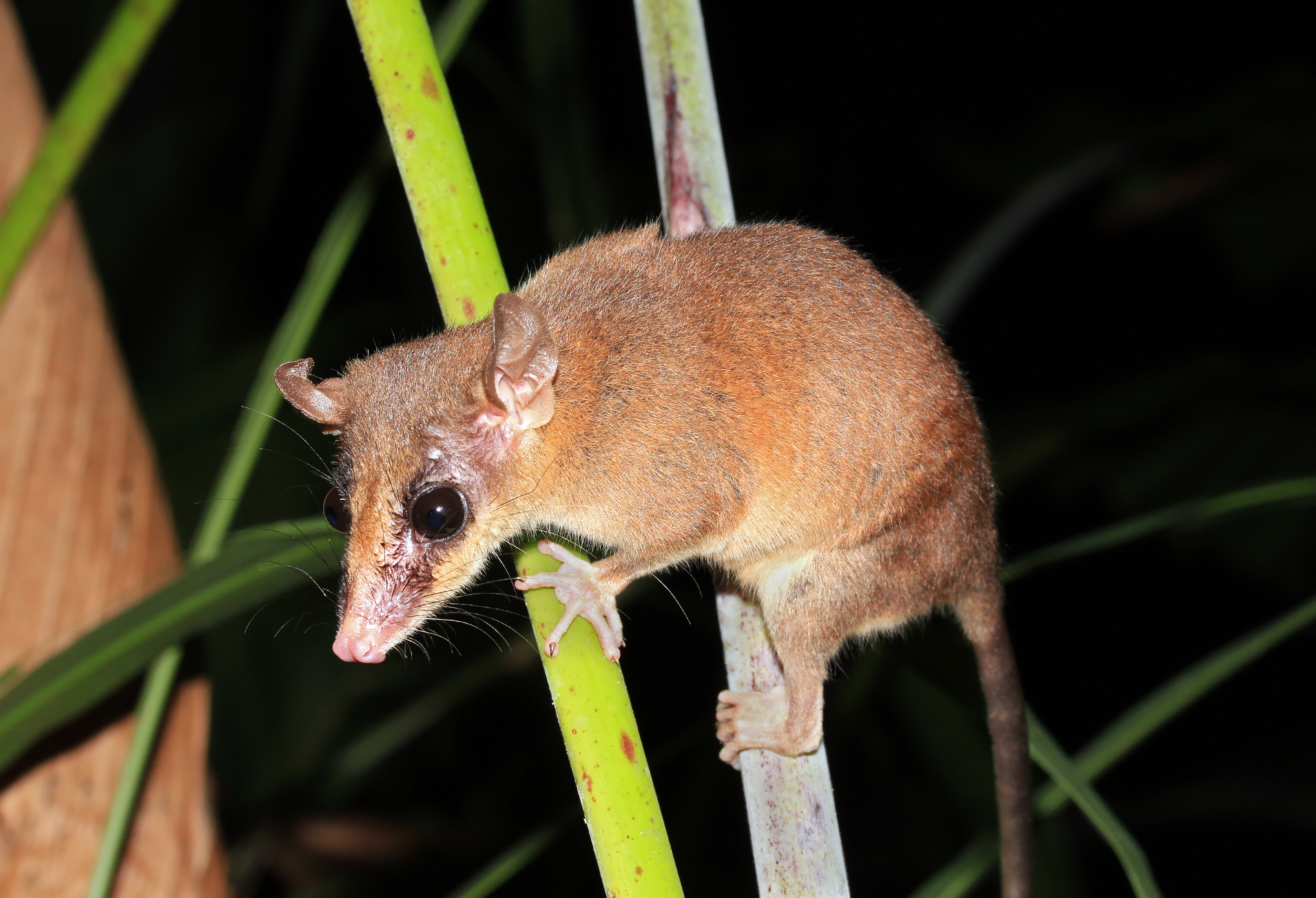Gray four-eyed opossum
(Philander opossum)

Description
The gray four-eyed opossum (Philander opossum) is an opossum species from Central and South America, ranging from southern Mexico to Peru, Bolivia and southwestern Brazil, at altitudes from sea level to 1600 m, but generally below 1,000 metres (3,300 ft). Its habitats include primary, secondary and disturbed forest. It is one of many opossum species in the order Didelphimorphia and the family Didelphidae. It has a sharply defined white spot above each eye, hence the common name. Its prehensile tail is bicolored, with a pale distal part and a longer proximal darker gray part, and is naked at the end. Its dorsal fur is gray, while its ventral fur, throat, and cheeks are cream-colored. Adults have ears that are black except at the base. Wild specimens weigh 200-674 grams (7.1-23.8 oz), while captive specimens can weigh up to 1.5 kilograms (3.3 lb). Body length ranges from 22.0 to 33.1 centimetres (8.7 to 13.0 in) with a tail in a similar size range, 19.5 to 35.5 centimetres (7.7 to 14.0 in). The species is nocturnal, solitary and partly arboreal. It is usually found in moist areas, often near streams, although it wanders in many different vegetation types. It is a good swimmer. Gray four-eyed opossums do not have a well defined territory, and home range stability depends on the availability of adequate resources. They are omnivorous, feeding on small animals and vegetation, such as leaves, seeds, and fruits. The gray four-eyed opossum does not "play dead" like the North American Virginia opossum. Instead it is aggressive and fights with potential predators. Some displays of aggression include opening the mouth wide and hissing loudly. It is known to be "the fiercest fighter of the opossums". The gray four-eyed opossum is a nocturnal animal but can be active during the day. Although it is terrestrial, it is very good at climbing and swimming. It has agile and swift movements, and seems more alert than other didelphids. Gray four-eyed opossums build nests out of dry leaves in hollow trees, tree forks, fallen logs and in ground burrows. They roll up into a ball while sleeping and although their eyes are actually closed, the white patches of fur above their eyes gives them the appearance of an awake animal.
Taxonomic tree:







